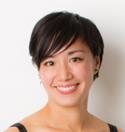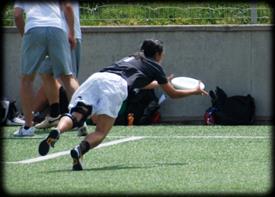Diseases & Conditions
Patient Story: Multiple Knee Injuries and Knee Instability

At 19 years old, Carol Chen was an athletic college student involved in a variety of sports, including running, biking, hiking, skiing, and snowboarding. One of her favorite recreational pastimes was Ultimate Frisbee, a high-energy team field sport that adds rules and competition to the traditional disc throw.
It was 1998, her sophomore year. During a game of Ultimate, Carol stopped suddenly, causing her leg to twist and her knee to hyperextend. She knew that she had damaged the soft tissue in her joint. Carol suffered an anterior cruciate ligament (ACL) tear, a medial collateral ligament (MCL) sprain, and tears to her meniscus, a curved piece of cartilage that acts as a shock absorber for the knee.
At the time, an MRI scan of Carol's knee suggested a complete tear of her ACL. She had her first of two arthroscopic surgeries. Her orthopaedic surgeon discovered the ACL was only partially torn. He cleaned debris from the knee joint and removed part of her meniscus.
About 18 months later, more of Carol's meniscus tore while walking, leading to another arthroscopic surgery. Her knee remained unstable and she suffered joint laxity. In 2005, her partial ACL rupture tore completely.
Carol's surgeon performed a chondroplasty, a reconstructive surgery to help repair damaged cartilage. However, her knee remained unstable, which she says leads to a painful partial dislocation about once a year.
"I used to wear a custom hinged knee brace," she says, "but ditched it in 2010. My knee seemed the same without the brace, so I just play more carefully and lift more weights. [My knee] definitely aches after activity, and it seems likely this will progress to arthritis."
Today, Carol lifts weights and uses other preventative measures to strengthen her knee and minimize instability and joint laxity. She is able to perform many of the same activities she enjoyed before her original knee injury, but she has greater pain and finds that she is more prone to suffer other injuries.

ACL injuries are a common athletic occurrence, and have been linked to an increased rate of degenerative changes and other injuries. There are about 95,000 new ACL ruptures each year, and approximately 60,000-75,000 ACL reconstructions are performed annually in the United States.
Carol's injury inspired her to alter her career path from chemical engineering to orthopaedic research. She earned her PhD from the University of California, San Francisco, and completed postdoctoral research in regenerative medicine at Stanford University. Carol currently works as a field application scientist at Essen Bioscience.
"As more and more people, including growing numbers of children, become increasingly active and sustain all kinds of injuries, it would be helpful if we could understand the progression of arthritis and some of the risk factors for developing arthritis or sustaining injury to the musculoskeletal system," she explains. "This could benefit those of us who are likely to place an increased burden on our healthcare system as we age and have more orthopaedic problems."
Carol hopes that the progression of arthritis can be prevented and that research will allow for better treatments to allow her, and others, to maintain an active, pain-free lifestyle.
Last Reviewed
September 2014
AAOS does not endorse any treatments, procedures, products, or physicians referenced herein. This information is provided as an educational service and is not intended to serve as medical advice. Anyone seeking specific orthopaedic advice or assistance should consult his or her orthopaedic surgeon, or locate one in your area through the AAOS Find an Orthopaedist program on this website.






